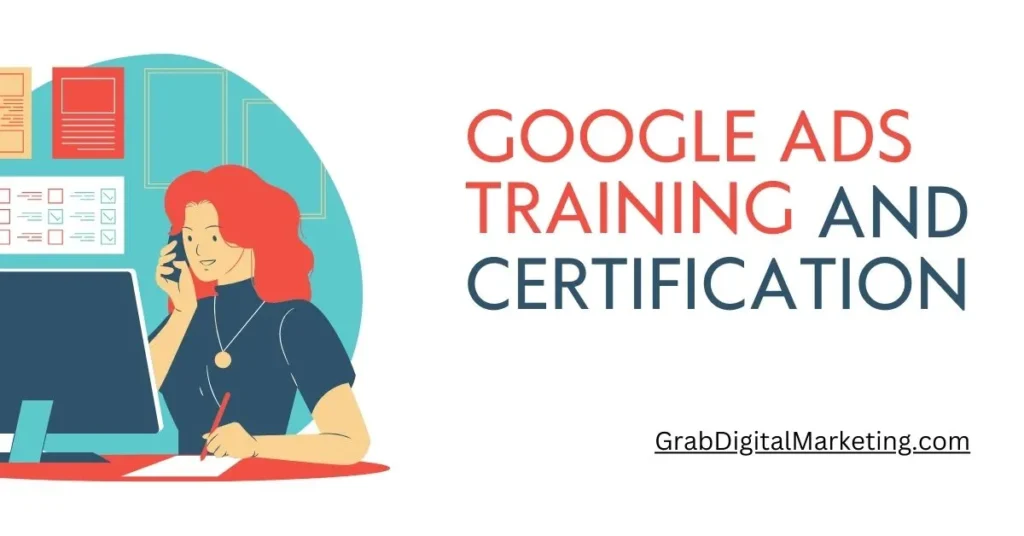What is Google Ads?
Google Ads is a platform by Google that lets businesses show ads on Google search results and other websites in Google’s network. Businesses choose keywords related to their products or services, and their ads show up when people search for those words. They only pay when someone clicks on their ad. Google Ads helps businesses connect with potential customers, get more visitors to their websites, and increase sales by showing ads to people based on where they are, what they like, and what they’re searching for.
Table of Contents
Introduction to Google Ads

Google Ads is a platform that helps businesses show paid ads to potential customers on Google Search, YouTube, and other partner websites. It used to be called Google AdWords. Businesses pick keywords related to what they offer and pay only when someone clicks their ad.
With Google Ads, businesses can create different types of ads—like search ads, banner ads, videos, and shopping ads—to reach the right audience. The platform uses details like age, interests, and location to make sure the ads are seen by the people most likely to be interested.
Advertisers can set their budgets and track how well their ads are doing by looking at things like how many clicks and sales they get. This helps them improve their ads and get the best results. Google Ads works well for all types of businesses, from small local shops to big global brands, helping them get more visitors, leads, and sales online.
Ad Formats and Specifications

Google Ads offers a variety of ad formats to suit different marketing goals and target audiences. Here are some of the most common ad formats:
- Search Ads: Text-based ads that appear on Google search results pages when users search for specific keywords. These ads typically include a headline, description, and a display URL.
- Display Ads: Visual ads that appear on websites within the Google Display Network. These ads can be images, videos, or rich media formats.
- Video Ads: Ads that appear on YouTube and other video partner sites. These ads can be skippable or non-skippable and can appear before, during, or after the main video content.
- Shopping Ads: Product-based ads that appear on Google Shopping and search results pages. These ads include product images, prices, and merchant information.
- App Campaigns: Ads designed to promote mobile apps across Google’s largest properties, including Search, Google Play, YouTube, and the Google Display Network
Creating Effective Ads

To create effective Google Ads, follow these best practices:
- Choose the Right Campaign Type: Select the campaign type that aligns with your advertising goals, such as Search, Display, Video, Shopping, or App campaigns.
- Determine Your Advertising Goals: Clearly define your objectives, such as increasing website traffic, generating leads, or boosting sales.
- Keyword Research: Conduct thorough keyword research to identify relevant keywords that your target audience is searching for. Use tools like Google Keyword Planner to find high-performing keywords.
- Ad Copy: Write compelling ad copy that includes a strong call-to-action (CTA) and highlights the unique selling points of your product or service. Ensure that your ad copy is relevant to the keywords you are targeting.
- Ad Extensions: Use ad extensions to provide additional information and improve the visibility of your ads. Common ad extensions include site link extensions, call extensions, and location extensions.
- Landing Pages: Ensure that your landing pages are relevant to your ads and provide a seamless user experience. Optimize your landing pages for conversions by including clear CTAs and relevant content.
- Bidding Strategies: Choose the right bidding strategy based on your advertising goals. Common bidding strategies include manual CPC, enhanced CPC, and automated bidding options like Target CPA and Target ROAS.
- Targeting Options: Use targeting options to reach your desired audience. You can target users based on demographics, interests, behaviors, and geographic locations.
- Performance Tracking: Monitor the performance of your campaigns using Google Ads and Google Analytics. Track key metrics such as click-through rates (CTR), conversion rates, and return on ad spend (ROAS) to measure the success of your campaigns.
- Optimization: Continuously Optimize your campaigns by testing different ad variations, adjusting bids, and refining targeting options. Use A/B testing to identify the most effective ad elements and make data-driven decisions to improve campaign performance.
Google Ads Training and Certification

Google Ads offers free training and certification programs through Skillshop, Google’s official learning platform. These courses help individuals and businesses master Google Ads, covering topics like search ads, display ads, video ads, shopping ads, and campaign measurement. The certification process involves completing structured learning paths and passing assessments to demonstrate proficiency. Earning a Google Ads certification validates expertise in online advertising and can enhance career opportunities. Certifications are recognized by Google and can contribute to a company’s Google Partner status. Training is self-paced, allowing learners to study at their convenience. Google also provides additional educational resources, including video tutorials and help center articles. Whether you’re a beginner or an experienced marketer, these certifications help optimize ad campaigns and improve digital marketing strategies.
Conclusion
Google Ads is a versatile and powerful advertising platform that can help businesses achieve their marketing goals. By understanding the different ad formats, following best practices, and continuously optimizing your campaigns, you can maximize the effectiveness of your Google Ads efforts and drive meaningful results for your business.

